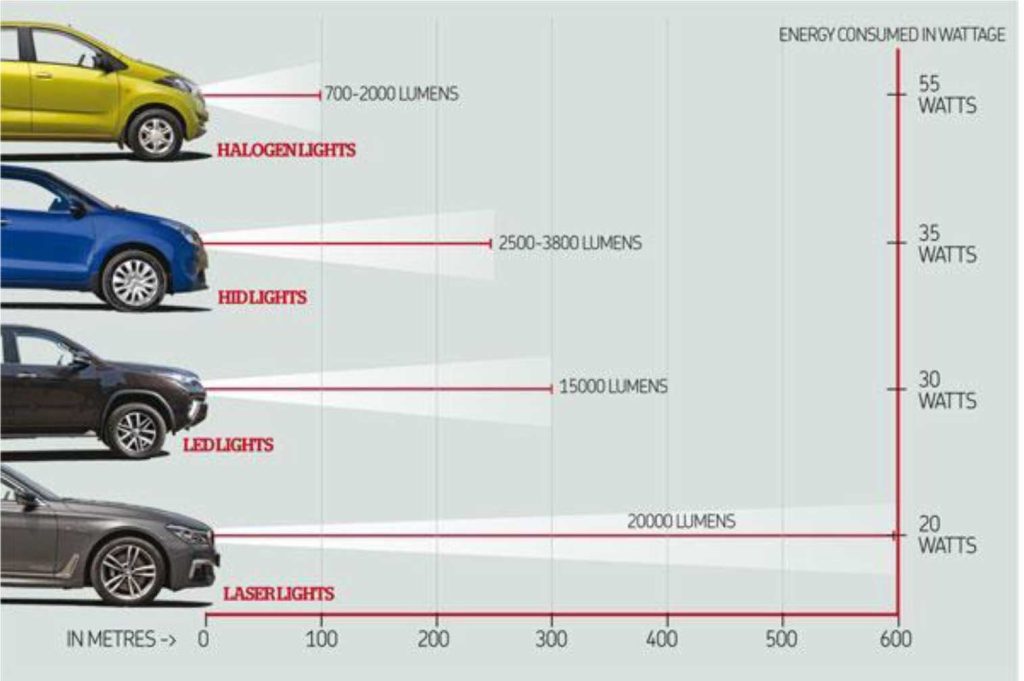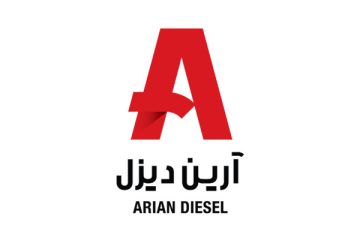Innovative technologies of interior lighting and exterior lighting in the automotive industry
Published by Baadl on

Today, with the improvement of the standard of living in the world, the per capita car ownership has also increased, and in such a situation, the qualitative development of interior lighting and exterior lighting in the car is of great importance, which in this article from act group introduces its types and describes the use of each one in detail.
Compared to the past, the lighting conditions of car lights are gradually improving in terms of scientific and technological content, and this issue can provide public health, passenger safety, improved steering and other functional needs of cars.
Since the introduction of LED, xenon, and laser technology, the automotive lighting industry has been challenged with many improving opportunities in the field of interior decoration lighting and the quality of exterior car lights. In fact, it’s a market that’s set to reach over $29 billion by the end of 2022.
The increase in car production, especially in the electric and hybrid market, further reveals the numbers behind this car lighting boom, especially light sources that reduce energy consumption.
LED light sources are increasingly used in automotive applications due to energy efficiency, weight reduction, and quality of parts.
With a special focus on the automotive LED light sources market, it is predicted that the turnover of the automotive LED light sources industry will experience an annual growth of about eight percent.
Technological trends - interior decoration lighting
According to a report published in 2016 by Credence Research on the growing trend of automotive interior lighting technology, the global automotive interior lighting market reached $3.1 billion in 2015 and is expected to grow from 2016 to 2023 with A growth of about 4.9 percent.
Two examples of new technologies related to the lighting of car interior decorations are as follows:
- OSRAM has released its LED products for lighting the interior of the car with the standard light index with the product code E1608 and E3030, which covers a wide range of LED color temperatures and enables car manufacturers to make unique changes of light. Provide the interior environment from cold blue and delicate white light to comfortable warm red and white light. The color index ( CRI ) of this series of LEDs is more than 90, which is a high level in current car applications.
offer a wide range of color temperatures (2700 K to 6500 K ), but due to their extremely compact sizes, they can be used for various types of car interior lighting products.
These two products also create an atmosphere beyond traditional technology. It has provided comfortable interior lighting from the reading light to the use of the interior mirror to comfort in the interior seating area of the car. - HELA company brought a new concept to the interior lighting market with the dynamic interior lighting design of Chevrolet Camaro. The instinctive design of the LEDs is such that the color flows from the central display in the vehicle. The driver can choose from 24 colors of the information display or select a preset color display for cruise, track, sport and display modes.
The lights change dynamically to create a fluid feel as the color changes flow through the drink holders to the vehicle’s exterior. One of the features of the design is that the colors are uniform despite the use of various materials in the interior.
Automakers are investing in the development of lighting concepts as a means of brand differentiation, but another concept is to use light to convey information to the driver to present a vision of the future of transportation. Light and sound are used to communicate with the driver and other road users. For example, colored light illuminates the foot area to indicate whether the car is in manual or self-driving mode, and light is used on the exterior of the car to communicate with the driver.
As the driver approaches the vehicle, text appears on the door panel, while the rear of the vehicle can display information about curves or hazards to other road users.
Statistics show that 49% of all vehicle occupant fatalities occur in the dark, while only 25% of our driving time is at night, indicating that safety concerns regarding exterior and main vehicle lights should be in the spotlight.
In the field of innovation for car headlights, there have been significant developments in the field of lighting technology.
Beyond simply lighting the road ahead, the latest innovations in automotive lighting are gaining more attention for safety, design, and appearance.
As these trends begin to catch on with customers and are implemented in most new cars, statistics show that improved lighting can drastically reduce the number of accidents at night.
Surveys regarding the volume of LED used in automotive exterior lighting applications show that around 2.79 billion pieces were consumed with LED light sources in the automotive industry in 2015, which has increased to 3.67 billion pieces by 2020.
The volume of LED used in headlights and position lights from 2015 to 2020 has faced a growth of about 15%, which shows a growth of about 23%, especially in the case of main car headlights with high and low beams.
The following image shows a simple comparison for a correct understanding of the light quality (optical lumens) and energy efficiency in the use of different light sources (halogen-xenon-laser and LED ) in car headlights.

new technologies related to the Interior lighting and exterior lighting in the car
1) Polar Daylight LED
is placed as Safe Beam safety light technology. Its spectrum is in accordance with the CIE standard definition in ECE R128.
While the lights shine a high-resolution light on the car in front, it also emits a bright white light of 5800K, which provides good illumination on the road.
It provides safe lighting for the driver without dazzling other pedestrians and vehicles. It reduces the risk of eye fatigue and provides a clearer, safer and more suitable visual experience for the driver and pedestrians.
2) Dual purpose flexible LED car light
This technology was announced by the South Korean company Hyundai, which is a flexible LED car light called HLED.
H in HLED can stand for High Performance, High Definition and High Consistency. This product can be bent like a film, and its thickness is only 5.5 mm, and its low-heat and low-consumption LED chip allows it to be used as a rear position light and control brake light.
With its flexible nature, this product is able to emit bright and uniform light in five different directions simultaneously and increase the driver’s visibility.
At the same time, automobile companies can also design complex and unique shapes according to this feature and create beautiful lighting animation effects.
3) ID4 technology for Volkswagen electric SUV
Volkswagen has introduced the ID4 lighting technology as a new model of a lighting solution for the first all-electric SUV, which is equipped with LED Matrix, pre-starting lights and 3D LED taillights.
LED lighting modules, each of which can be individually set or turned off, and enables intelligent control for continuous lighting in distant light.
In addition, the modules are very similar to the human eye, with a smooth halo at the bottom that surrounds the Volkswagen logo, allowing drivers on the road to see important information about the car at night.
Another feature of this technology is that whenever the driver approaches another vehicle, the light rotates from the bottom to the top to create the visual effect of “head up to greet“.
At the same time, the lighting module can open the eyes and then turn to the side to give the impression that the car is seeking eye contact with the driver.
4) Ultra high brightness LED series technology (UHL LED)
The heat loss of this technology, when applied to car headlights, has been reduced by 75% due to its structure design, and as a result, it reduces the consumption of electrical energy by 20% compared to other similar products.
On the other hand, the small luminous surface of the product is suitable for very thin design to fully compensate for the reduction of heat loss performance due to the reduction of the luminous area, while maintaining various capabilities to improve performance.
5) Light sensors and smart lighting systems
Apple introduced this technology towards the car for a light sensor embedded in an autonomous navigation system and an adjustable lighting system and a method based on the detection of occupants and objects.
Light sensors embedded in the vehicle interact with the external environment to provide light emission and environmental monitoring, and the adjustable lighting system can be automatically turned on as needed within each area.
Light guidance automatically and dynamically increases or decreases light in locations associated with occupants, objects, or related areas to minimize disturbance to other vehicles.
6) Pixel Dot matrix LED headlight
The Swedish electric coupe Polestar 2 is equipped with advanced pixel matrix LED lighting technology, which has provided a new range of headlights in the high-tech electric car segment.
Dot Pixel Matrix LED lights are equipped with Active Headlight Technology and Sequence Welcome Lights that activate a greeting sequence light effect when the car is unlocked.
Each headlight has 84 LED light sources that are placed in a matrix, which allows precise control of the light source at any point.
While driving, when an oncoming or oncoming vehicle is detected, some LED lights are dynamically turned off to avoid interference with other vehicles, and it has the ability to detect up to five vehicles.
Even with the high beam always on, this feature gives the driver the best forward visibility to avoid annoying light glare in the direction of other cars.
7) Digital matrix LED headlight
has introduced LED headlights with digital matrix technology. This product consists of 1.3 million micro-mirrors, each of which emits tiny and unique particles of light that show opposite images with high resolution.
The technology also offers a 50-meter optical range that helps drivers detect other objects or pedestrians on the road with the best visual clarity when the headlights are on.
8) Laser headlight
BMW introduced laser headlights and related technology. In this technology, three monochromatic blue laser beams pass through a series of mirrors in the main chamber, and then the laser beam passes through a yellow phosphor filter.
The blue laser reacts with the yellow phosphor to create a cone-shaped white beam that points directly at the road.
By using this technology, the light produced is about ten times brighter than current LED lights, and since it may distract drivers in urban traffic, this product can only be used at speeds above 60 km/h on city roads. Safety improvements are used.
This technology uses an integrated infrared camera system combined with a laser beam that detects an oncoming vehicle and sends a signal to the control unit, which automatically dims the headlights.
At the same time, if the infrared camera system detects an obstacle on the road, it will focus the laser beam directly on the obstacle at a distance of up to 90 meters, and the laser beam can communicate with the car’s GPS navigation system to predict road turns ahead of time and provide better visibility. Give the car to the driver.
Conclusion
The automotive industry is in a transformational phase in terms of Interior lighting and exterior lighting in the car, and new technologies have emerged that improve performance, safety, and aesthetics.
In the future, automotive lighting design companies have technologies to create 3D effects through the close arrangement of changeable light surfaces and the possibility of controlling individual light units for dynamic performance.
Today, the mentioned technologies in the field of Interior lighting and exterior lighting in the car in the world show that for a long time this industry has said goodbye to the static lighting function in the car and has been completely integrated into the dynamic era of light and shadow.
From the perspective of the overall development trend of the lighting industry in the automotive industry and market, the gap between the automotive lighting technology and the global advanced level can be summed up in six words: heavy duty, but not far!



0 Comments